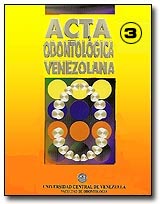TRATAMIENTO QUIRÚRGICO AMBULATORIO DE QUISTE DEL CONDUCTO TIROGLOSO EN EL PACIENTE PEDIATRICO
Keywords:
Cirugía Ambulatoria, Quiste Tirogloso/cirugía, Estadía Hospitalaria, Thyroglossal duct cyst, Ambulatory Surgery, Hospital of StayAbstract
Se realizó una investigación observación al, retrospectiva y descriptiva de 80 pacientes con diagnóstico clínico e histológico de quistes del conducto tirogloso tratado ambulatoriamente. Con el objetivo de mostrar los resultados de este método en pacientes pediátricos y valorar los factores que influyeron en el tiempo de estadía. La edad fue inferior a los diez años en 20 % de la serie estudiada. Todos los pacientes acudieron al hospital el día de la operación La cirugía empezó antes de la 1PM en 100 % de los casos. El tiempo medio de anestesia fue de 70 minutos y el tiempo medio quirúrgico fue de 50 minutos. La técnica de Sistrunk fue realizada en 92,5% de los casos. Los factores que significativamente impactaron en el tiempo de estadía fueron el uso de drenaje y los signos postoperatorios inestables. El seguimiento mínimo de los pacientes fue de un año. Ocho pacientes mostraron recidivas y fueron reintervenidos a los 10 meses. La cirugía ambulatoria para la exeresis del quiste del conducto tirogloso es segura con el paciente adecuado. La planificación para la cirugía ambulatoria se presento usando técnicas quirúrgicas meticulosas, y evitando drenajes cuando la hemostasia fue adecuadaSUMMARY
An observation retrospective, and descriptive investigation of 80 patients with clinical and histopalogycal diagnosis of cysts of the thyroglossal duct, who recived ambulatory care. The goal of this estudy was to show the results of this procedure in operated pediatric patient and to value the factors that influrnced in the period of stay. The age was under 10 years in 20 % of the studied group.All patients went to the hospital on the day of their surgery. It began before 1PM in 100% of the cases. The mean time of anaesthesia was 70 minutes and the surgical 50 minutes. Sistrunk technique was performed in 92.5% of the cases.These factores that determined mainly the stay period were the use of drainage and unstable postoperative signs. The minimun follow-up of the patients lasted one year. Eight patients had relapse and received surgical treatment 10 month later. Ambulatory surgery for excision of the cyst in the thyroglossal duct can be safe with the adequate patient. Planning for ambulatory surgery should begin the day before, using careful surgical procedure, and avoiding drainage when hemoistasis is adequate.
Downloads
Download data is not yet available.


